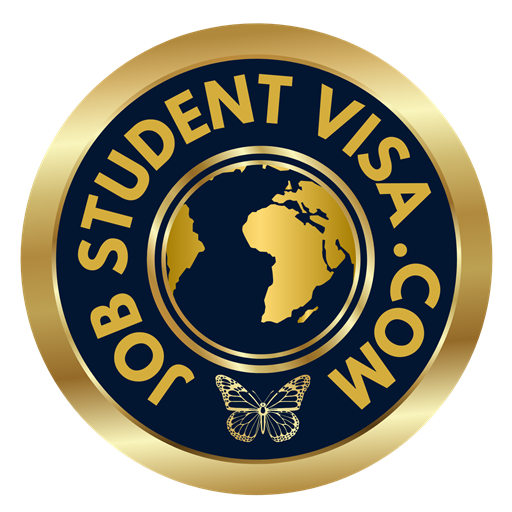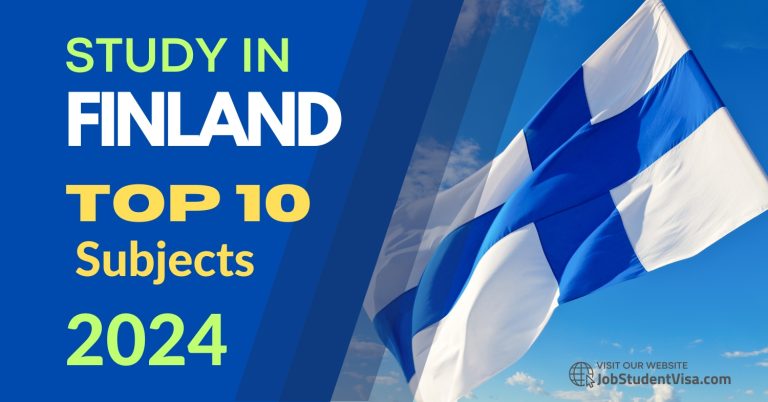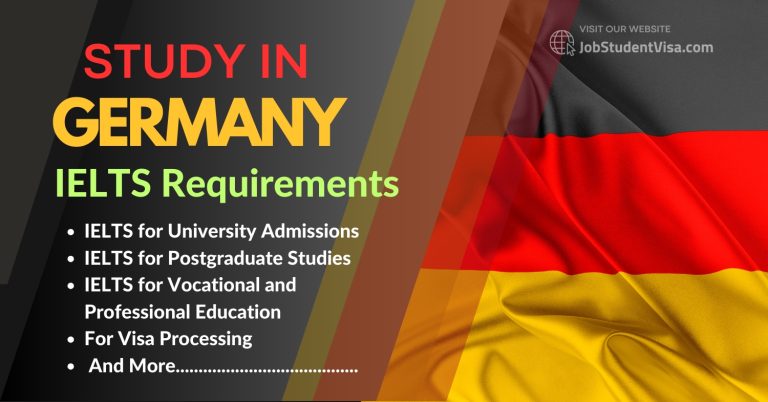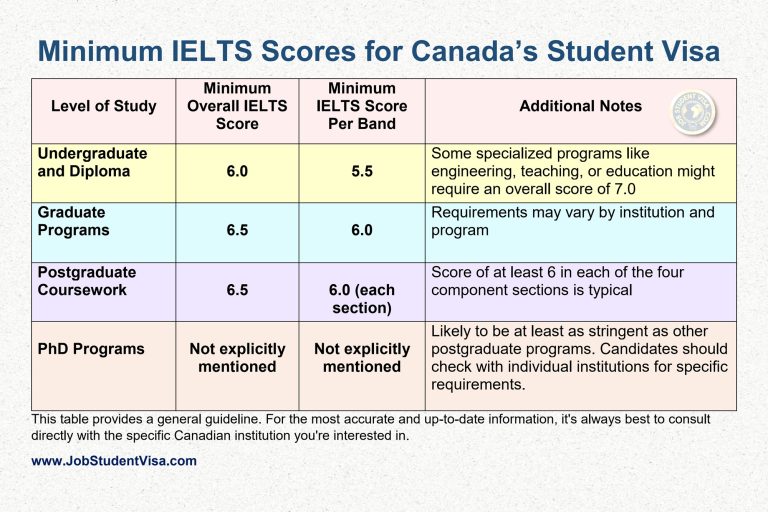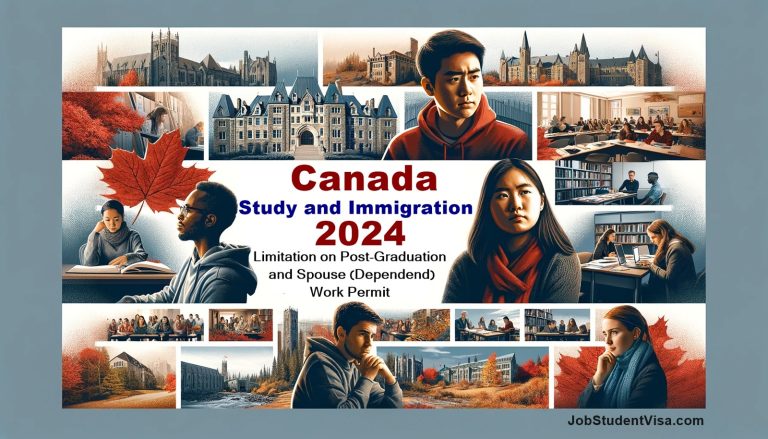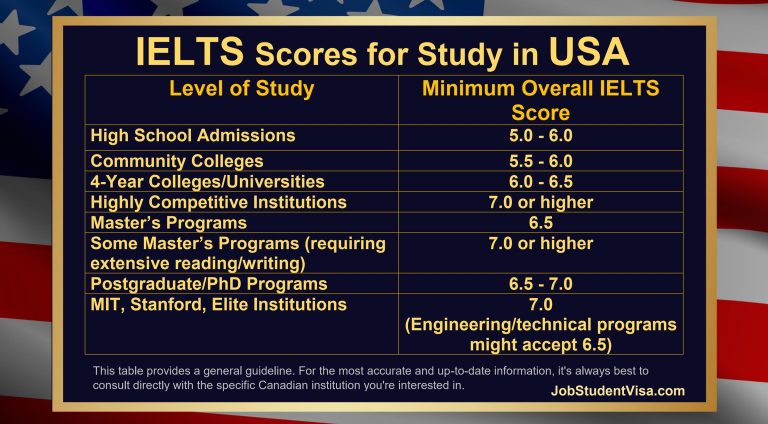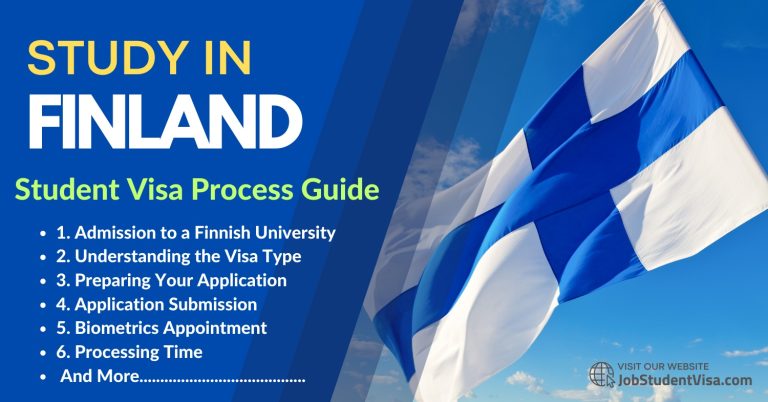Student Visa Requirements for United States (USA)
Unlock your academic potential in the United States (U.S.) with our in-depth guide on student visa requirements. Learn about the F-1, M-1, and J-1 visas, application procedures, and tips for a successful visa journey.
Embarking on an educational journey in the United States is an exciting prospect for countless students around the globe. The U.S. is home to a myriad of prestigious universities and colleges, offering diverse programs that attract a wide range of academic interests. However, before packing your bags and setting off to immerse yourself in a new cultural and academic experience, there’s a critical step you must take: obtaining a student visa.
Navigating the U.S. immigration system can seem daunting, but fear not. This comprehensive guide is designed to simplify the process, providing you with a clear roadmap of the requirements and procedures for securing a student visa. Whether you’re aiming to attend a top-tier university, engage in vocational training, or participate in an exchange program, understanding the visa process is key to turning your academic dreams into reality.
In the following sections, we’ll explore the different types of student visas available, delve into the requirements you need to meet, and offer tips to ensure your visa application process is as smooth as possible. Let’s embark on this journey together, starting with a closer look at the types of student visas offered by the United States.
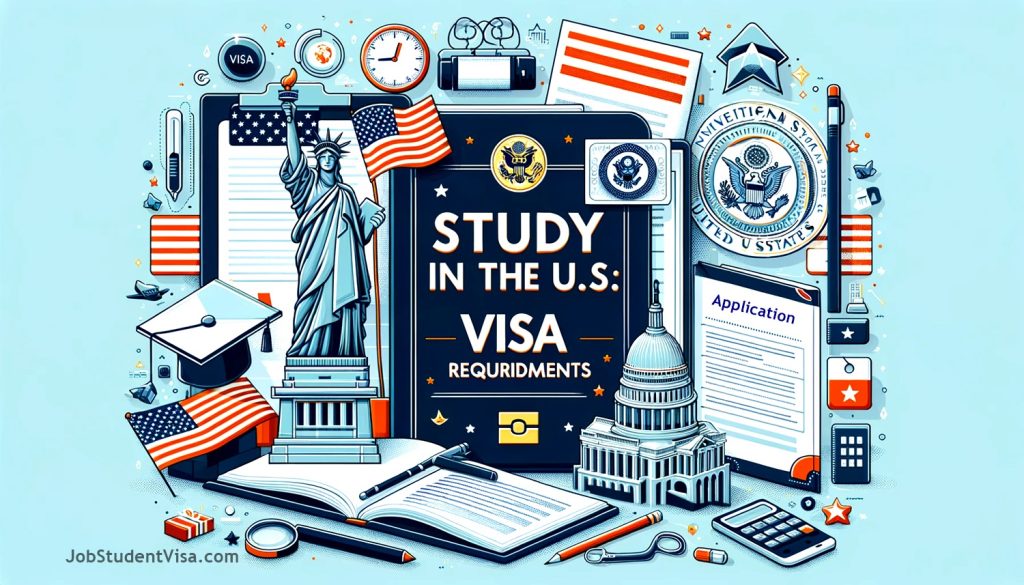
U.S. Student Visa Requirements
Aplying for a student visa to study in the United States is a comprehensive and intricate process that demands thorough preparation, attention to detail, and an understanding of various regulations and requirements. The journey to acquire a U.S. student visa, particularly the F-1 visa which is designated for academic students, involves several stages, each with its distinct set of prerequisites, costs, and timelines. Here’s a detailed exploration of each step in the process.
1. Admission to a SEVP-Certified School
- Requirement: The first and foremost step is gaining admission to a school certified by the Student and Exchange Visitor Program (SEVP). U.S. law requires all international students to attend a school that is registered with the SEVP. This certification ensures that the institution meets certain educational and operational standards.
- Timeline: Application deadlines for U.S. schools can vary significantly. For most universities, it’s wise to start the application process at least 6-12 months before the intended start date of your program. This timeline allows for any contingencies like retaking entrance exams or addressing visa delays.
- Preparation: Gathering transcripts, test scores (like SAT, GRE, GMAT), letters of recommendation, personal essays, and proof of English proficiency (for non-native speakers) is crucial. Each institution has its unique requirements and admission standards.
2. Payment of SEVIS Fee
- Fee: Upon acceptance by an SEVP-certified school, you’ll be registered in the Student and Exchange Visitor Information System (SEVIS) and must pay the I-901 SEVIS fee. As of 2023, this fee is set at $350. This fee funds the operational costs of SEVIS and is mandatory for all F-1 visa applicants.
- Proof of Payment: After paying the SEVIS fee, it’s essential to print and keep the payment confirmation receipt. This document is required during the visa application process, especially for the visa interview.
3. Visa Application Form (DS-160)
- Requirement: The next step involves completing the Online Nonimmigrant Visa Application, Form DS-160. This form is quite comprehensive, requiring details about your personal information, your study plans in the U.S., and past travel history. It also includes questions pertaining to security and health.
- Fee: The visa application process also involves paying a non-refundable visa application fee, commonly known as the MRV fee. As of 2023, this fee amounts to $160 for F-1 visa applicants.
4. Scheduling and Preparing for Your Visa Interview
- Timeline: After submitting the DS-160 form, you must schedule an interview at the nearest U.S. Embassy or Consulate. The waiting time for an interview can vary greatly, depending on the location, season, and visa category.
- Documentation: Preparation for the interview involves gathering all necessary documents, such as your valid passport, the Form I-20 (provided by your SEVP-certified school), SEVIS fee payment receipt, DS-160 confirmation page, visa application fee receipt, and passport-sized photographs. Additional documents like academic transcripts, test scores, and financial evidence may also be required.
5. English Language Proficiency
- Requirement: For non-native English speakers, proving English proficiency is a critical component. Standardized tests like TOEFL (Test of English as a Foreign Language) or IELTS (International English Language Testing System) are widely accepted. The minimum score required varies by institution but typically falls around 80 for TOEFL iBT or 6.5 for IELTS.
- Timeline: Make sure your test scores are current, usually within the last two years. Planning and preparing for these tests well in advance is crucial, as they not only affect your visa application but also your university admission.
6. Financial Proof
- Requirement: One of the most significant aspects of the visa process is proving that you have sufficient funds to cover your educational and living expenses in the United States. This can be demonstrated through bank statements, proof of scholarships or fellowships, or financial guarantee letters from sponsors.
- Amount: The exact amount you need to show varies depending on the institution and your living arrangements. Generally, you must demonstrate enough funds to cover tuition and living expenses for the first year of your studies, though some consulates may require proof of funding for the duration of your degree program.
7. Visa Interview
- Process: The visa interview at the U.S. Embassy or Consulate is a crucial step. During the interview, a consular officer will evaluate whether you are qualified to receive an F-1 student visa. The officer will assess your study plans, your intent to return to your home country after your education is complete, and your overall eligibility.
- Tips: Being well-prepared is key. Practice answering potential questions about your study plans, why you chose a particular school, your ties to your home country, and how you plan to finance your studies. The interview is typically brief, so clear and concise answers are essential.
8. Visa Approval and Issuance
- Timeline: The processing time for a visa can vary. In some cases, visas are approved and issued immediately following the interview. In other cases, additional administrative processing may be required, which can take several weeks or even months.
9. Preparing for Travel
- Entry to the U.S.: With your F-1 visa, you are typically allowed to enter the United States up to 30 days before the start date indicated on your Form I-20.
- Orientation Programs: Most educational institutions offer orientation programs for international students. These programs are highly beneficial as they provide essential information about campus life, U.S. culture, and legal responsibilities as an international student.
10. Maintaining Visa Status
- Requirement: Once in the U.S., maintaining your F-1 visa status is vital. This includes being enrolled full-time, making satisfactory academic progress, refraining from unauthorized employment, and adhering to the rules of your visa category.
Additional Considerations
- Health Insurance: Health insurance is highly recommended, and some institutions require international students to enroll in a health insurance plan.
- Renewal: If your visa expires while you are in the U.S., you don’t need to renew it unless you plan to travel abroad and return to the U.S.
- Work Opportunities: F-1 students are typically allowed to work on-campus. Off-campus employment is restricted and requires specific authorization.
Obtaining a student visa for the United States is an elaborate and demanding process that necessitates thorough preparation, understanding of the requirements, and adherence to timelines and guidelines. Each step, from being admitted to an SEVP-certified school to maintaining your visa status, is crucial in ensuring a successful application. It’s imperative to stay updated on the latest regulations, prepare your documents meticulously, and seek guidance from your institution or an immigration expert when necessary. With careful planning and attention to detail, you can navigate the process effectively and embark on your educational journey in the United States.
